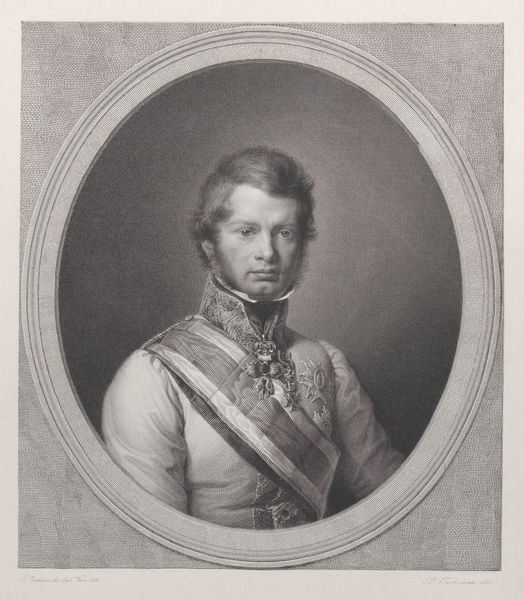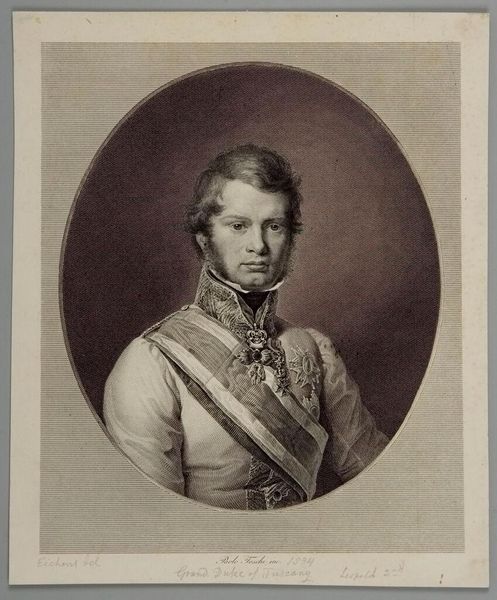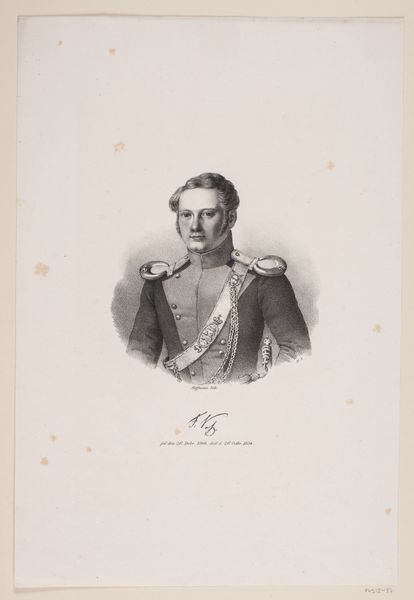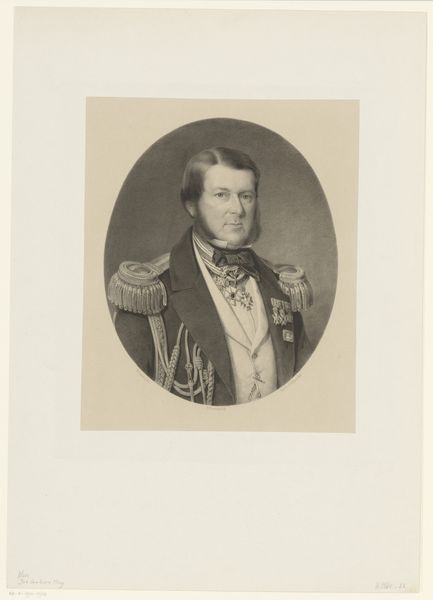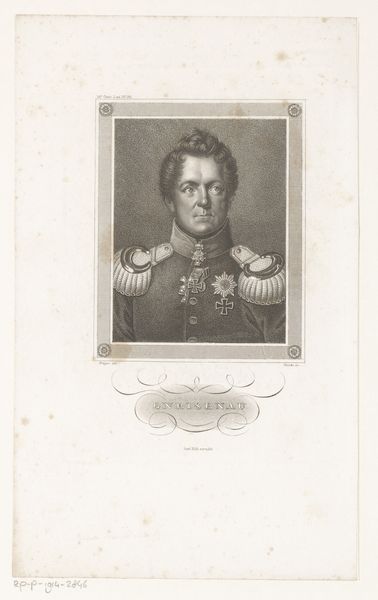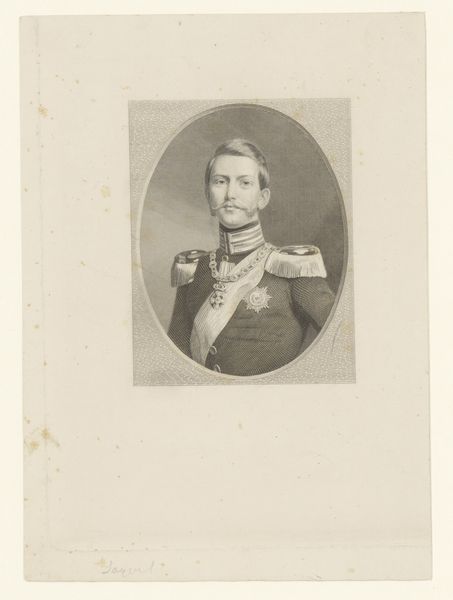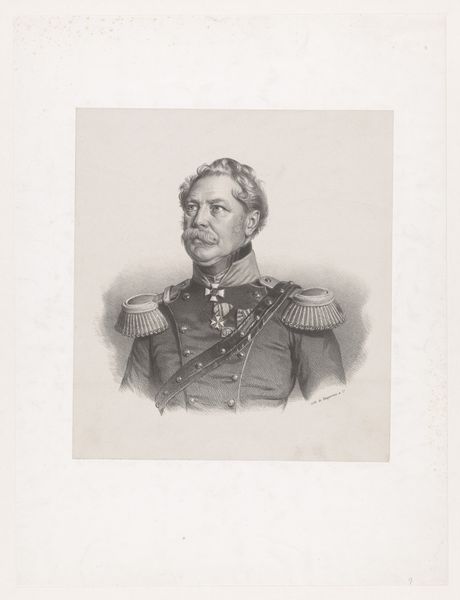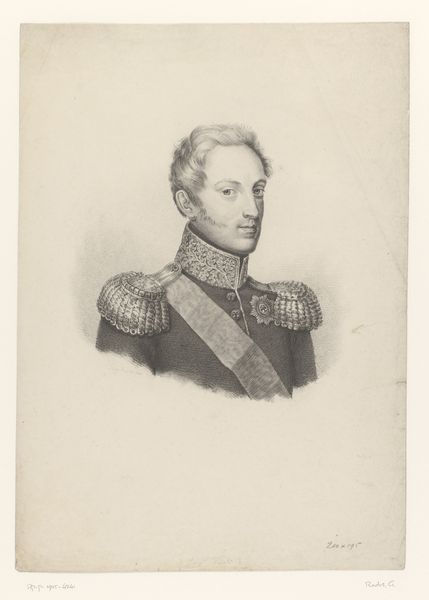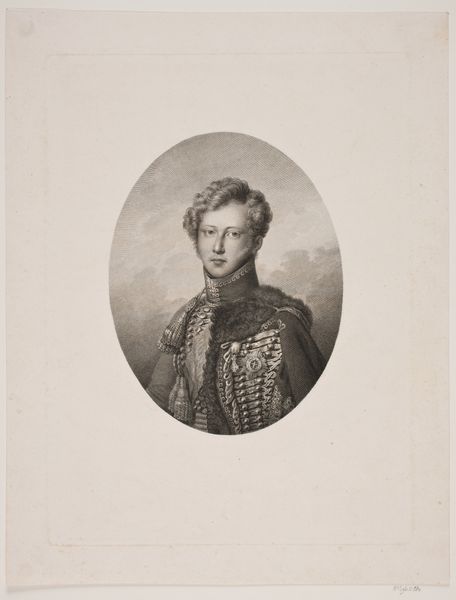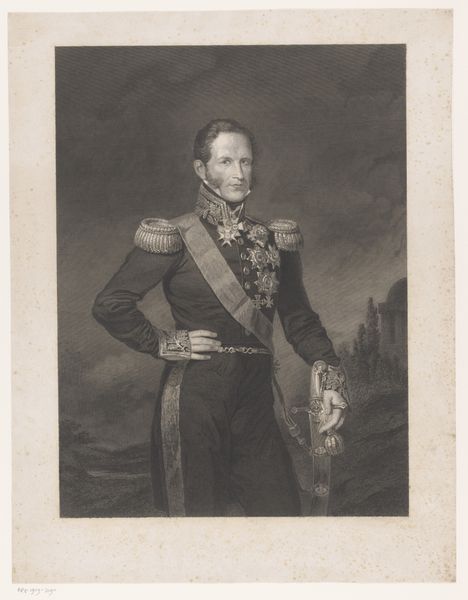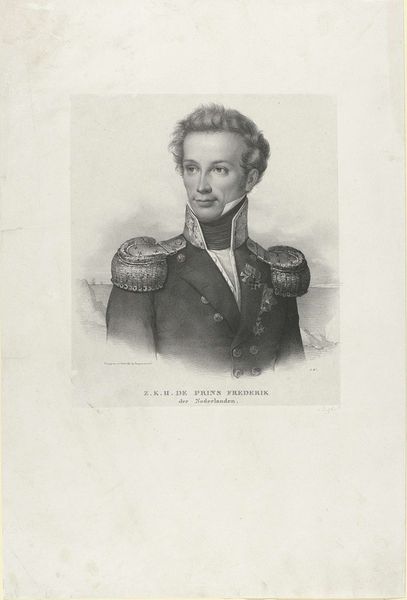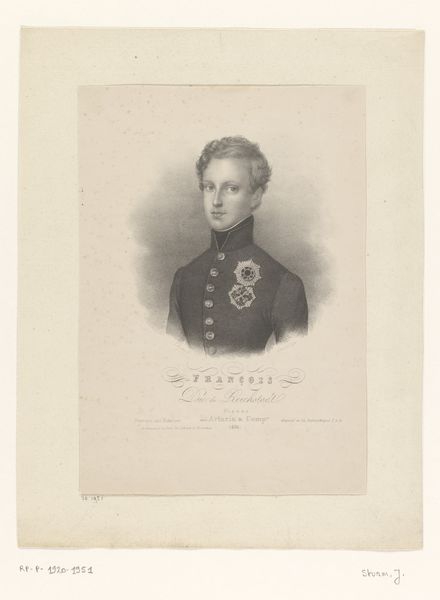
Oval portrait of Leopold II, Grand Duke of Tuscany 1828 - 1838
0:00
0:00
drawing, print, engraving
#
portrait
#
drawing
#
neoclacissism
# print
#
pencil drawing
#
men
#
engraving
Dimensions: Plate: 16 3/16 × 11 13/16 in. (41.1 × 30 cm) Sheet: 21 5/16 × 15 13/16 in. (54.1 × 40.2 cm)
Copyright: Public Domain
Editor: Here we have an oval portrait of Leopold II, Grand Duke of Tuscany, an engraving by Paolo Toschi, made sometime between 1828 and 1838. I’m struck by how the stark, clean lines convey such a sense of formality and authority. What's your take on this piece? Curator: Well, what jumps out at me is the political statement embedded in such a seemingly straightforward portrait. Consider the context: it was created during a period of immense social upheaval, yet we see Leopold II presented in a style that evokes stability and tradition through neoclassical conventions. Editor: That makes sense. So, you're saying the artistic choices—the formal pose, the medium—are all carefully constructed to project a certain image of the Grand Duke? Curator: Precisely. The engraving medium itself, as a readily reproducible form, allowed for wide dissemination of this image. Think about that – it was a carefully controlled message aimed at solidifying his image amongst the population and perhaps beyond. What details reinforce that in your eyes? Editor: The embellishments: his sash, medals. Those items showcase prestige but also wealth and class. Are you suggesting this artwork’s formal and rigid structure further portrays a strict control? Curator: Yes, that rigidity you noticed—it speaks volumes. These visual cues were deployed to portray him as a leader ordained, fit to govern despite a climate of rising democratic sentiments and revolutionary undertones bubbling across Europe. Editor: It's amazing how much historical narrative can be packed into a portrait like this. I hadn't considered the role of reproducibility in shaping public perception. Curator: Exactly! It makes you realize the immense power images held and continue to hold in constructing and perpetuating narratives around leadership and authority. Always consider: who commissioned this and for what purpose? Editor: I definitely see portraiture in a different light now. Thanks!
Comments
No comments
Be the first to comment and join the conversation on the ultimate creative platform.
